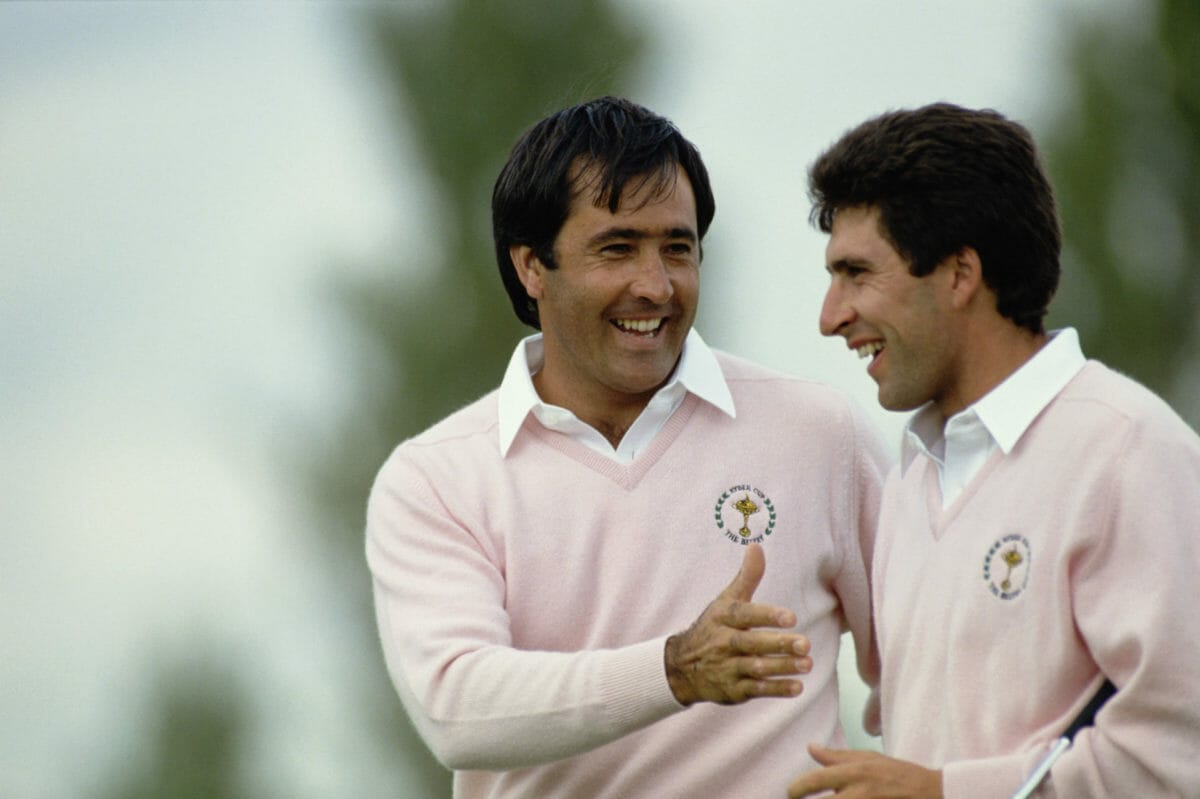Today, the Ryder Cup is the most anticipated event in golf, but it wasn’t always so. By 1977, the event was on its knees. The United States had beaten Great Britain and Ireland in eight of the previous nine editions – Jack Nicklaus’ famous concession to Tony Jacklin at Birkdale in ’69 to tie the cup being the outlier – and the reality was that it was no longer a contest.
The ’69 tie aside, the minimum margin of victory was five points, stretching as far as ten in 1975. Nicklaus’ suggestion that Great Britain and Ireland incorporate continental Europe as well was an effort to resuscitate the biennial trophy, but few thought it would ever return from intensive care.
Just two Europeans would join the Anglo-Celtic brigade in 1979, Spaniards Ignacio Garrido and a 22-year-old who had just won the Open Championship named Severiano Ballesteros. Despite the addition of the Spaniards, normal service was resumed and an American rout ensued.
Always fiery by nature, Ballesteros’ cup debut was one to forget, winning one but losing four of his five matches. Afterwards, bemoaning lady luck and the unfair bias with which he felt the course was set up, what the American’s perceived as sour grapes was actually the first spark of the defibrillator that would bring the Ryder Cup back to life.
Though absent from the 1981 drubbing due to a dispute with the European Tour, Seve returned to enemy territory for the ’83 staging at Palm Beach, Florida, and earned two wins and two halves from his five matches as the US team squeaked home by a single point thanks to Tom Watson holding his nerve to win the final match on course.
Narrow defeats were an improvement, but only making the Americans taste the bitterness of defeat would complete the resurrection of the cup, and this was a dish that Seve was now desperate to serve up. At the Belfry in 1985, along with foursome and fourball partner Manuel Piñero, Seve was instrumental on and off the course as the Europeans looked to end a run of 13 tournaments without a win.
On Friday afternoon, just in off the course himself after playing very well but somehow losing to Mark O’Meara and Lanny Wadkins, a brooding Seve sat in front of the TV in the European Team room with an untouched sandwich in his lap. Though he was due out in the second pairing in the afternoon foursomes, he was engrossed in the last of the morning fourballs as Craig Stadler and Curtis Strange battled Bernhard Langer and Sandy Lyle.
One down on the final hole, Lyle and Langer could only make par and watch helplessly as Stadler stood over an 18-inch putt to win the match. Under any other circumstances, this putt would be conceded, but pressure does strange things to a putting stroke. According to Seve’s biographer, Alistair Tait, Ballesteros edged closer to the TV screen, almost as if he was attempting to exert his will on the situation, before leaping into the air, chair sent flying as he crash landed as Stadler’s putt drifted wide.
Hooting, hollering and banging on the wall separating the European team room from the American room next door, this seemed like a pivotal moment for Seve and for Europe. A short time later, Ballesteros and Piñero viciously dispatched the wounded Stadler and Hal Sutton to put another point on the board. A little over 24-hours later, America had lost its first Ryder Cup in 28 years.
During the next six stagings, Europe would win three and retain the cup in another. In each of those six, two points or less was the victory margin. Seve would play in five and, in an emotional homecoming, be a winning captain at Valderrama in the sixth. His partnership with Jose Maria Olazabal is the most successful in the history of the Ryder Cup, winning seven out of a possible eight points in the tied championship in ’89 and at the notorious Kiawah Island War on the Shore in 1991, and 12 of a possible 15 across four Ryder Cups.
Nowadays, players will regularly cite Ryder Cup experiences as the highlight of their careers. Even players with major titles, and it was in this era that that culture was created. An event that had become something of a burden, an unpaid inconvenience, was now right back at the top of the food chain. And thanks in no small measure to the man from a little seaside village in Northern Spain.
Often enigmatic, often infuriating, but always entertaining.
Gone now, but never forgotten. The spirit of Severiano Ballesteros still walks the fairways every other September.
























Leave a comment